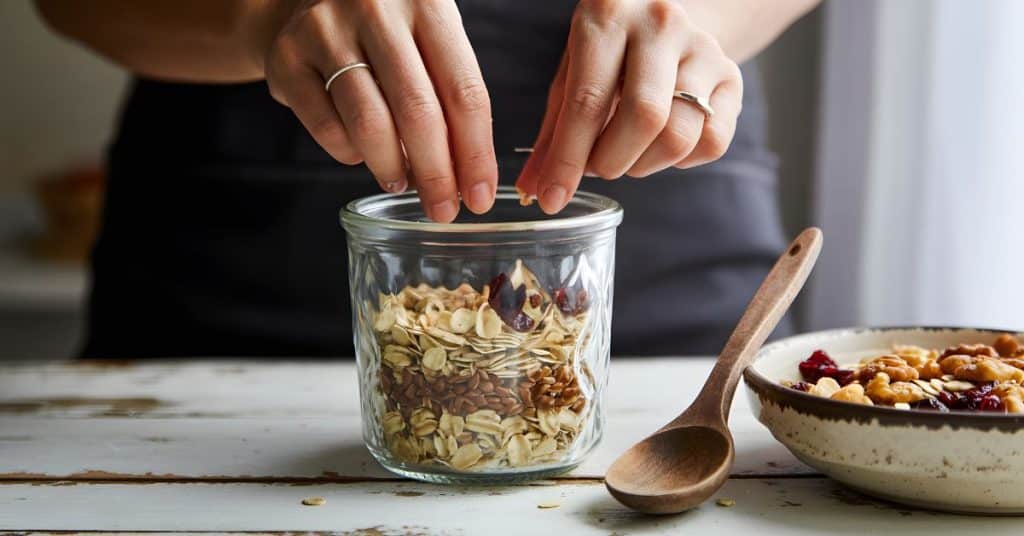

Whole grains are an important part of a healthy diet, providing the complex carbohydrates that our bodies prefer as their main energy source, as well as fiber, vitamins, minerals, and other micronutrients. Unlike processed grain products like white rice and white bread, whole grains actually help to control our weight by making us feel full longer.
If they’re so healthy, why don’t more people eat whole grains? One possible reason is that many people are unsure how to cook them and intimidated by the process. Here’s the good news: whole grains are easy to add to your diet, and most are very simple to cook.
The following guidelines from the Whole Grains Council refer to cooking grains on the stovetop. Simply add the recommended amount of liquid, bring to a boil, and finally, lower the heat to a simmer until the liquid is absorbed. I would only add one recommendation: rinse your grains before cooking.
|
|
grain:liquid ratio |
simmering time (after bringing to a boil) |
cooked yield (per uncooked cup) |
|
amaranth |
1:2 |
15–20 minutes |
2 ½ cups |
|
barley, hulled |
1:3 |
45–60 minutes |
3 ½ cups |
|
buckwheat |
1:2 |
20 minutes |
4 cups |
|
bulgur |
1:2 |
10–12 minutes |
3 cups |
|
cornmeal (polenta) |
1:4 |
25–30 minutes |
2 ½ cups |
|
farro |
1:2.5 |
25–40 minutes |
3 cups |
|
Khorasan wheat |
1:4 |
45–60 minutes (after soaking overnight |
3 cups |
|
millet, hulled |
1:2.5 |
25–35 minutes |
4 cups |
|
oats, steel cut |
1:4 |
30 minutes |
3 cups |
|
pasta, whole wheat |
1:6+ |
8–12 minutes |
varies |
|
quinoa |
1:2 |
12–15 minutes |
3 cups |
|
rice, brown |
1:2.5 |
25–45 minutes |
3 cups |
|
rye |
1:4 |
45–60 minutes (after soaking overnight) |
3 cups |
|
sorghum |
1:4 |
25–40 minutes |
3 cups |
|
spelt berries |
1:4 |
45–60 minutes (after soaking overnight) |
3 cups |
|
teff |
1:3 |
20 minutes |
2 ½ cups |
|
wheat berries |
1:4 |
45–60 minutes (after soaking overnight) |
2 ½ cups |
|
wild rice |
1:3 |
45–55 minutes |
3 ½ cups |
As you can see in the chart, cooking times often vary. Variables include the age of the grain, the variety, and the cooking pan you use. If the grain is not as tender as you would like it to be when the cooking time is up, simply add more water and continue cooking. Conversely, if the grain is well cooked before all the liquid is absorbed, drain the excess liquid and serve.
Most whole grains cook perfectly in a slow cooker. Just add four cups of water or broth per cup of whole grains and cook on the lowest setting for about eight hours. You can also easily add whole grains to your favorite stew or soup recipes for the slow cooker. About one half of a cup is a good amount to start with. Grains are also a great way to bulk up salads and side dishes. If you make a large batch in the slow cooker, you can freeze the leftovers and have them ready to toss into any salad or side dish whenever you want!
Here are a few of my favorite slow cooker recipes:
Bulgur is one of my favorite grains to cook with a slow cooker. I like to make a big batch of bulgur and use it in recipes like tacos or spaghetti because it adds a ground beef texture and soaks up the flavors of the dish.
Copyright 2025 Center for Nutrition Studies. All rights reserved.